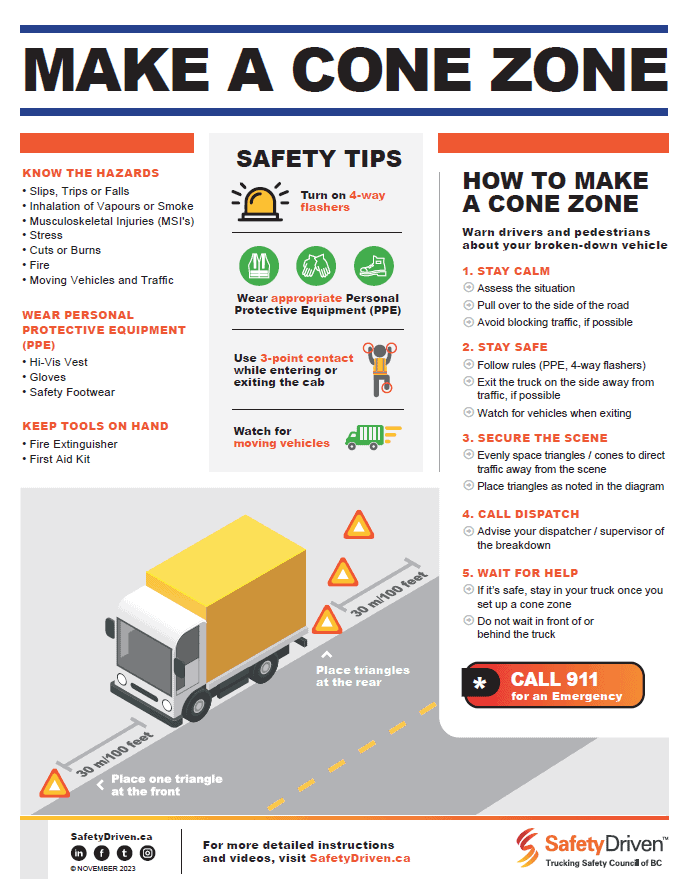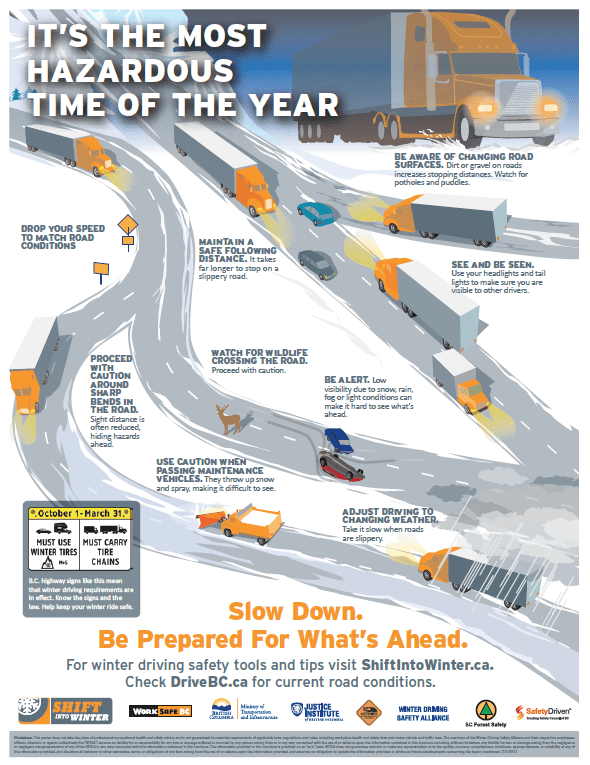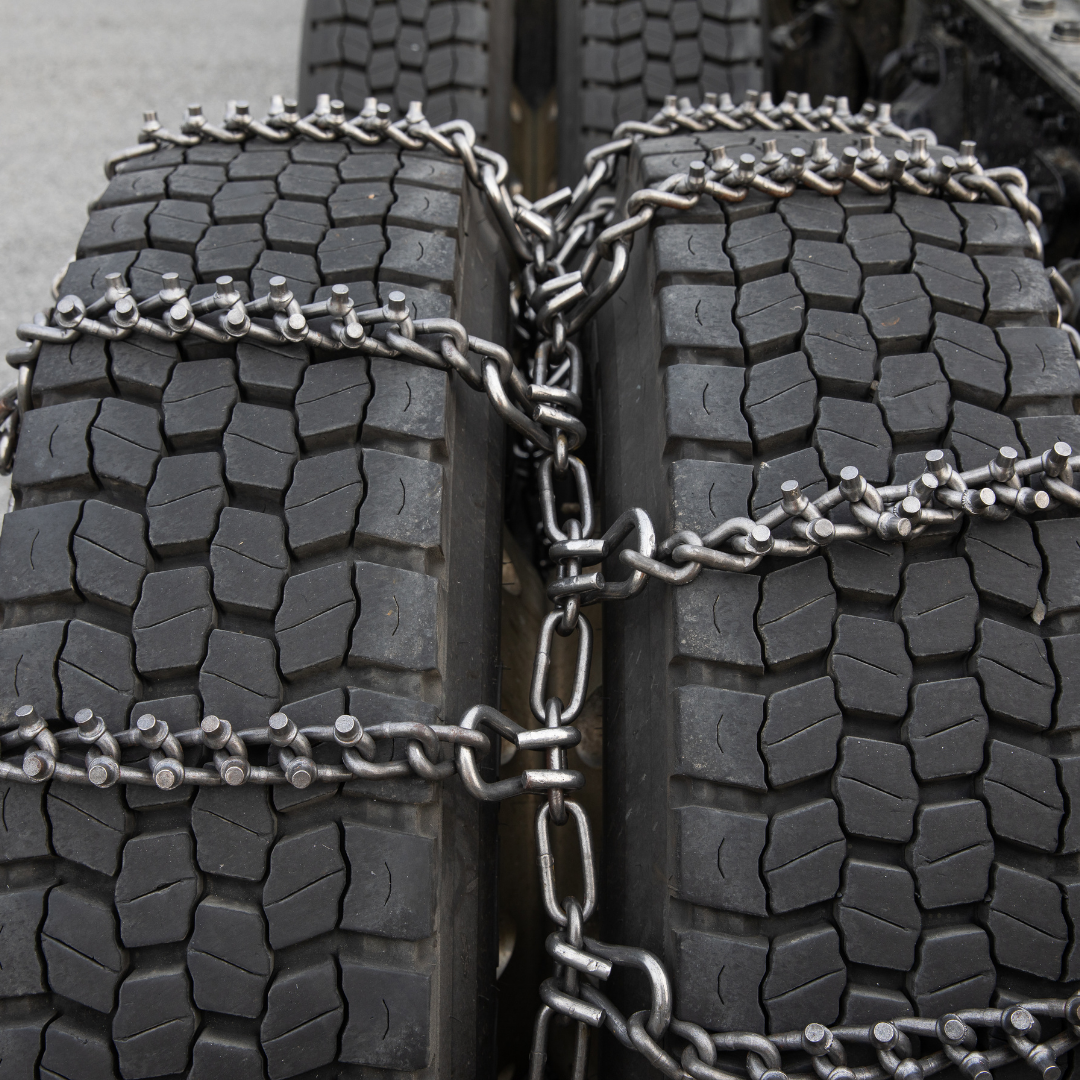
Proper Chain-up Skills Key to Surviving B.C. Winter
Chaining up is a fact of life for most commercial drivers in Western Canada during the winter months. And for those new to traversing the high elevations of B.C.’s mountain passes, the process can be a daunting and sometimes dangerous one.
There are, however, some simple tips that can help make chaining up less of a hassle, as well as save drivers some time and discomfort.
Safety and location
The first thing a driver should assess when looking to install tire chains is a safe place to pull over. B.C. has several chain-up areas along its highways, particularly on mountain passes where inclement weather is often right around the corner.
Drivers should position their vehicles in a way that provides ample space from other motorists. This is especially important at night when visibility declines, or in bad weather.
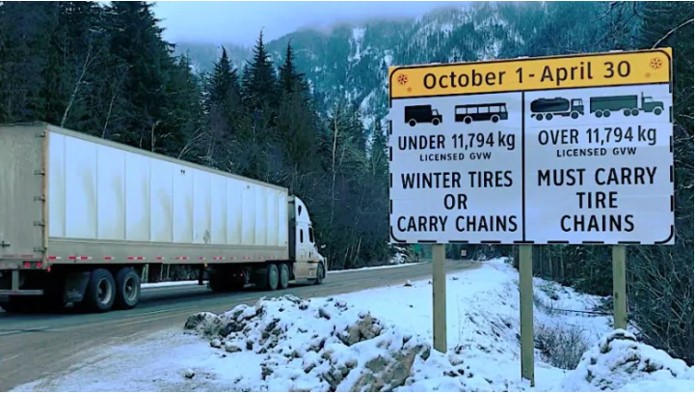
“In many instances, a driver will chain up in the dark since there are fewer hours of sunlight in the winter,” said Brad Zall, safety advisor for SafetyDriven – Trucking Safety Council of B.C. “Having a flashlight or headlamp can really make a difference.”
In addition to wearing high-visibility clothing and using four-way flashers to increase their visibility, Zall said drivers need to be prepared for severe weather conditions.
“During my career as a driver, I’ve seen many other drivers outside in a T-shirt trying to chain up,” he said. “Getting stuck or spinning out sucks and it can be very frustrating, especially when there is traffic behind you. Adrenaline starts pumping and the last thing on your mind is to grab a jacket. However, if you grab your jacket and take a second to calm your nerves, it can save a lot of time and fumbling when putting chains on.”
Louis Hamel is the owner of Extreme Professional Driver Training in Kamloops, B.C., and he echoed Zall on the importance of monitoring weather and road conditions.
“Though they can change in a heartbeat, it can prepare you for what might come,” said Hamel. “In and around B.C., there are mandatory chain-up areas. If there’s drizzle on the bottom, it’s possibly snowing on top.”
Having proper gloves is another small piece of equipment that will come in handy when installing tire chains.
“Typical leather gloves that are commonly used by commercial drivers can quickly become soaking wet and cold,” said Zall. “I recommend drivers use gloves that are partially dipped in latex for extra grip and some added water resistance. At the very least, carry an extra pair of gloves.”
Zall said warm, water-resistant coveralls that are quick and easy to put on can also help keep drivers warm and dry while chaining up in cold conditions.
Installation process
There is a right and a wrong way to chain up. The first thing is to “always make sure the chains are in good condition and, more importantly, that they fit the tires,” Hamel explained.
To apply the chains, place them over the tire, traction side up, and tuck the excess chain underneath the front or back of the tires. Next, drive backward or forward, depending on where you placed the excess chain, watching in the mirrors and stopping once the chain hooks are halfway up the tire.
To secure the chains, hook the middle chain rail and fasten tightly, then attach the inside rail tightly, and finally the outer chain rail. Use the cam tool on all the chain D-cams to tighten further.
Lastly, hook the bungees on the outside rail and tighten across the wheel to remove any slack.
“Always ensure the chains are put on as tight as possible,” said Hamel, recommending to stay well under the speed limit while driving with chains, and make sure they are put on properly after traveling a short distance.
Zall added that drivers should stop periodically to make sure the chains stay tight to the tire.
“Roll your window down a tiny bit while driving,” said Zall. “You will hear the chains on the tires and notice if there is any clanging or banging.”
Zall said many tire chain manufacturers specify not to exceed 50 km/h while driving with chains.
Tire socks
Another type of tire traction device is approved for use in B.C. on some configurations – the AutoSock. Approved in 2015, AutoSock is a type of covering that fits on the tire like a sock to create traction on snow and ice.
The AutoSock uses high-performance fibers and a specially designed surface pattern to maximize friction on snow- and ice-covered roads by making the total contact area exposed to dry friction as large as possible. It can be installed in less than five minutes per wheel, minimizing a driver’s exposure to weather and traffic, and at less than 5 lbs. per pair, provides weight savings compared to a 50-lb. set of traditional chains.
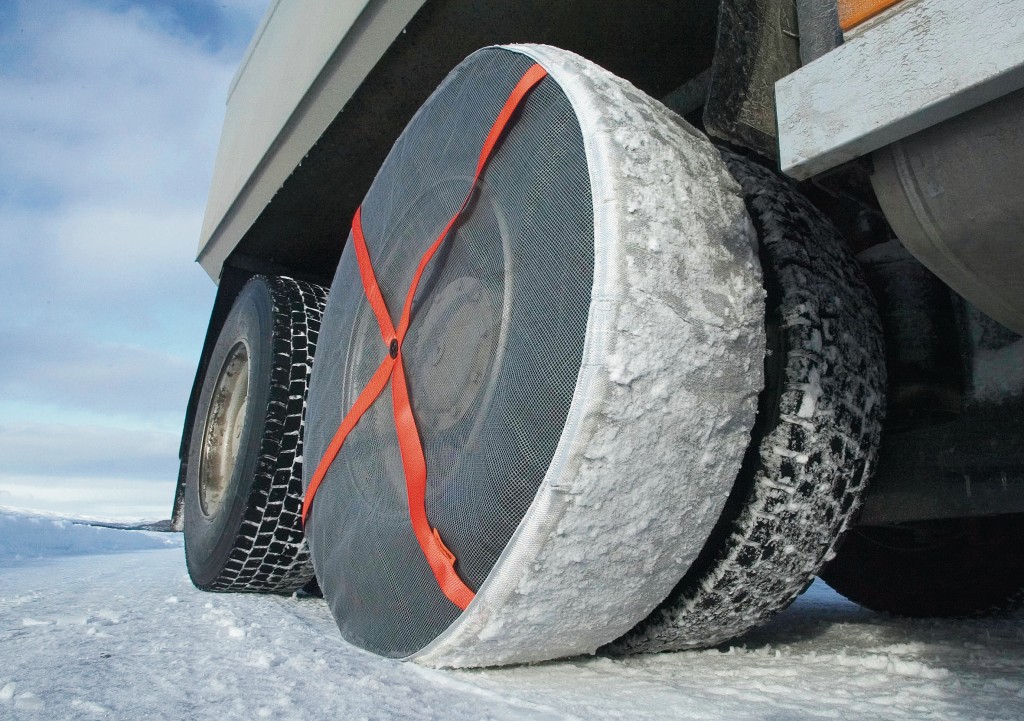
B.C. amended its Motor Vehicle Act to change the definition of ‘traction device’ to include textile tire covers for Classes 3-8 trucks. However, commercial vehicles 11,794 kg GVW and greater, such as tractor-trailers, are still required to carry steel chains (Autosocks are not approved) on most major highways.
To ensure the effectiveness of the AutoSock, the company advises drivers to make sure they use the correct size for their tires. Drivers should also not exceed 50 km/h while they are installed, avoid spinning the tires or driving on dry or damp roads, which increase wear, remove before parking for long periods, and store inside the cab where wet AutoSocks will not freeze.
Follow the rules
B.C. implemented new tire chain regulations on Nov. 28, 2018, increasing fines for those not carrying chains or not using them when required.
Since this time, drivers have faced a $196 fine for not carrying chains when they are required, and a $598 fine for not installing chains during mandatory chain ups.
Winter chain-up in B.C. runs from Oct. 1 to April 30, with vehicles over 11,794 kg required to carry tire chains and those under 11,794 kg having to use winter tires or carry chains. Previous regulations only required vehicles over 27,000 kg to carry and use traction devices, and only one wheel needed to be chained during mandatory chain ups. The new regulations clarify for all vehicles over 5,000 kg.
Base-level fines during previous winters were $121 for not carrying chains or not installing them when the law required.
The provincial government increased the fines in an effort to improve safety and reliability of B.C.’s highways during the winter months.
During the winter of 2017-18, there were 35 extended closures of the Coquihalla Highway, 33 involving commercial vehicles. Following the new regulations, 2019 numbers dropped to 10, with nine involving commercial vehicles.
“B.C. has numerous mountainous highways and drivers need to be prepared for changing road conditions,” B.C.’s Ministry of Transportation and Infrastructure told Today’s Trucking. “Commercial drivers traveling through areas with chain up areas should be prepared to chain up. Ensuring chains are in good operating condition, the required amount is carried, and knowing how to install them will assist drivers.”
The ministry said B.C.’s Commercial Vehicle Safety and Enforcement (CVSE) recognize that most drivers comply with the province’s chain-up requirements, and recommend all carriers and drivers inspect and prepare for winter chain-up season.
“Chain-up events are not the time to learn how to put on chains, and may come with enforcement action,” the ministry said.
For more information on winter chain-up requirements in B.C., visit www.drivebc.ca/chainup.php.
Download our new poster for instructions on chaining up here.
Latest Resources
Make a Cone Zone
Dowload this poster for tips on how to make a safe cone zone.Winter Hazards Poster
Drivers need to recognize winter hazards. Share this poster to remind drivers how to ...
